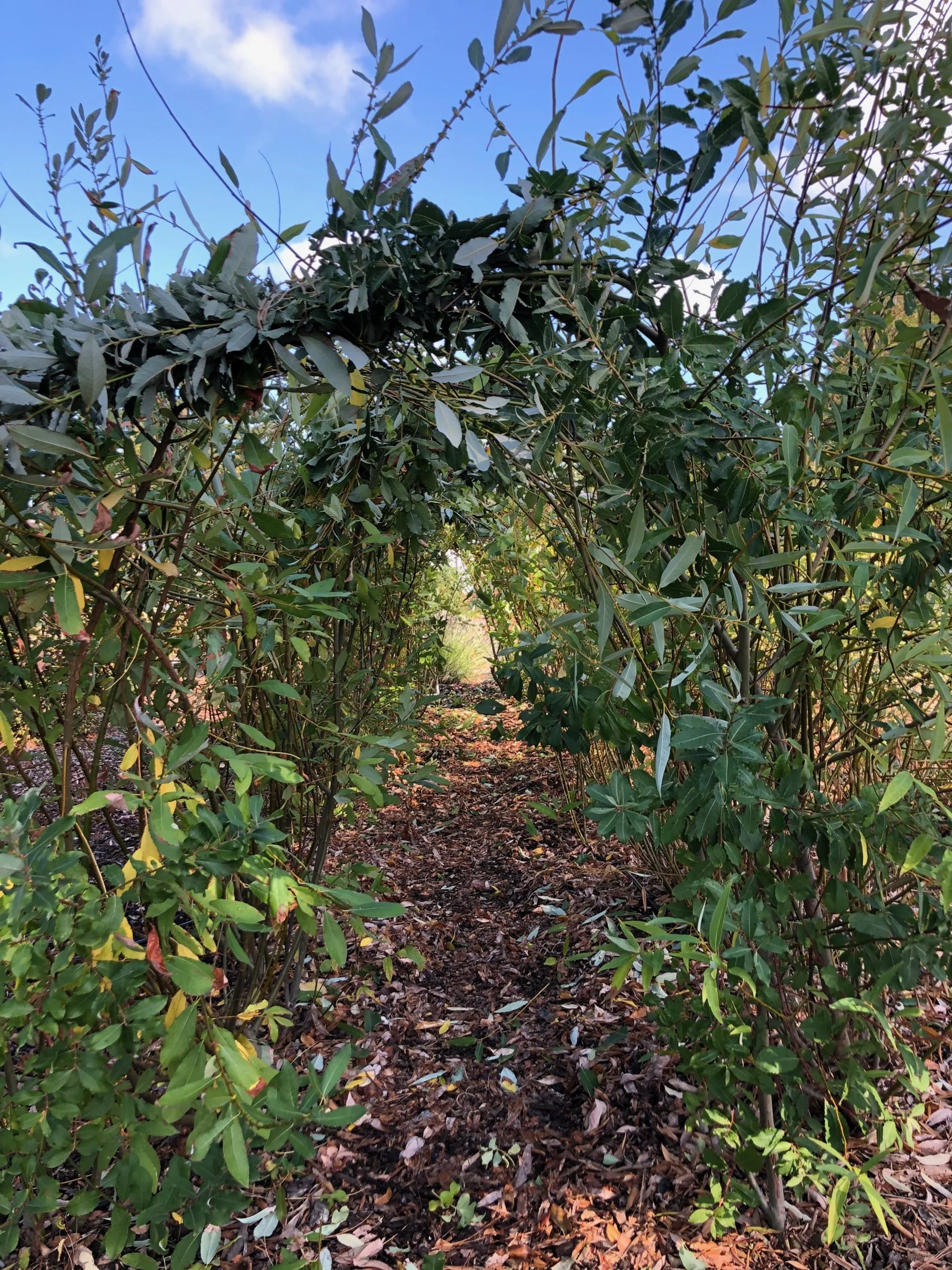Growing, Educating, and Connecting Communities
Original article appeared in the December 2021 MCMGA eNews
by Justina Klammer
After several years of neglect (thank you, Covid) the Willow Walk at the Demonstration Garden in SE Portland is getting some much needed attention. Gardeners Carole Hardy and Jen Hazen have taken up the cause and are giving new life to this interesting and interactive feature of the garden. The original plan for the walk called for a series of hoops and rebar to be installed in order to make a four foot tall tunnel that kids could crawl through, a willow “worm.” As Jen and Carole discussed the future of the willows, however, they decided that making such a small passageway prevented many people (both kids and adults) from enjoying the beauty and thrill of walking through a tunnel of living plants.
Even though neither Carole nor Jen had ever worked with willow in this way, they were committed to making the walk an accessible feature of the garden. They found guides and tutorials online and, of course, used their prolific gardening skills to heighten and clean up the walk. Says Carole, “In only two work sessions, we have managed to weave the two largest willow stalks into arches attaching branches with twine. Through the next months we will continue to weave and trim the branches and shape the tunnel.”
Most all willows (genus Salix) take root readily from cuttings and are important to a number of cultures throughout the world. In Buddhist tradition, the willow is associated with Kwan Yin, the bodhisattva of compassion. The willow is one of the four plants important to the Jewish festival of Sukkot. On the Day of Tomb Sweeping in China, people put willow branches on gates and doors to ward off evil spirits. Interestingly, some cultures’ views of willows are quite sinister. Japanese folklore associates willows with ghosts, while in English folklore, willows were believed to uproot themselves and follow travelers around.
Jen and Carole will continue to shape the walk throughout the winter, calling on fellow volunteers for help. Once the leaves are gone, it will be easier to see where more attention is needed. They will keep the top trimmed so as not to shade nearby plantings and are already anticipating the lovely, shaded refuge the walk will provide to tired gardeners during the summers. Assuming the willows all don’t uproot and stalk away, that is.
Here are a few links to find out more about living willow projects:
https://offgridworld.com/15-fabulous-living-willow-project-ideas/
https://www.lowimpact.org/lowimpact-topic/living-willow-structures/





